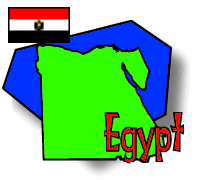
Breakfast: We dragged ourselves away from our laptops by late morning and, on the way to Islamic Cairo, snacked on leftover pastries from yesterday's Sphinx lunch.
Lunch: We stopped in between mosques to snack on some kushari from a street-side stand approximately the size of a closet. We ate our kushari on a bench perched precariously at the side of a road. ![]()
Dinner: See the Food of the Day.
Food of the Day: Egyptian pancakes
Word of the Day: Ana faehem and ana faeha — "I understand"
Person of the Day: Prophet Mohammed
Place of the Day: Islamic Cairo
Group Dispatch, November 22

Questions? Ask Anthony ![]() !
!
 |
 |
 |
 |
 |
|
Itinerary/ Journal |
Discussions |
About Egypt |
eDscape Projects |
Scrapbook |
|
|
|
|
|
|
Internet access while in Egypt was provided by InTouch Communications Services. |
Copyright 1997-2004 BikeAbout. All rights reserved.